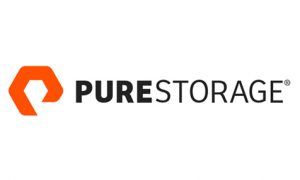Pure is redefining the storage experience and empowering innovators by simplifying how people consume and interact with data. Pure is delivering a modern data experience—empowering agencies to run their operations as a true, automated, storage as-a-service model seamlessly across all clouds
Understanding E911, Kari’s Law and Ray Baum’s Act
10 Minute Read
if you would like stay on top of the other articles and events by Presidio Federal, subscribe to our eNewsletter

UCM Cloud vs UCM Cloud for Government vs Webex10 Minute Read
March 28, 2022
(Almost) Everything I Know about Leadership, I Learned from Coding
March 30, 2022To understand E911, Kari’s Law, and RAY BAUM’S Act, let’s start with the definitions of each topic and then we will dive into how this affects companies.
What is E911?
Enhanced 911, E-911 or E911 is a system used in North America to automatically provide the caller’s location to 911 dispatchers. 911 is the universal emergency telephone number in the region. An incoming 911 call is routed to a Public Safety Answering Point (PSAP), which is a call center operated by the local government. At the PSAP, the call is answered by a specially trained official known as a 9-1-1 dispatcher. The dispatcher’s computer receives information from the telephone company about the physical address (for landlines) or geographic coordinates (for wireless) of the caller. This information is used to dispatch police, fire, medical and other services as needed.
What is Kari’s Law
Kari’s Law is named in honor of Kari Hunt, who was killed by her estranged husband in a motel room in Marshall, Texas in 2013. Ms. Hunt’s 9-year-old daughter tried to call 911 for help four times from the motel room phone, but the call never went through because she did not know that the motel’s phone system required dialing “9” for an outbound line before dialing 911.
Congress responded by enacting Kari’s Law in 2018. Kari’s Law requires direct 911 dialing and notification capabilities in multi-line telephone systems (MLTS), which are typically found in enterprises such as office buildings, campuses, and hotels. The statute provides that these requirements take effect on February 16, 2020, two years after the enactment date of Kari’s Law.
Under the statute and the Commission’s rules, MLTS manufacturers and vendors must pre-configure these systems to support direct dialing of 911—that is, to enable the user to dial 911 without having to dial any prefix or access code, such as the number 9. In addition, MLTS installers, managers, and operators must ensure that the systems support 911 direct dialing.
The Commission’s rules also implement the notification requirement of Kari’s Law, which is intended to facilitate building entry by first responders. When a 911 call is placed on a MLTS system, the system must be configured to notify a central location on-site or off-site where someone is likely to see or hear the notification. Examples of notification include conspicuous on-screen messages with audible alarms for security desk computers using a client application, text messages for smartphones, and email for administrators. Notification shall include, at a minimum, the following information:
- The fact that a 911 call has been made;
- A valid callback number; and
- The information about the caller’s location that the MLTS conveys to the public safety answering point (PSAP) with the call to 911; provided, however, that the notification does not have to include a callback number or location information if it is technically infeasible to provide this information.
What is RAY BAUM’S Act
Under Section 506 of RAY BAUM’S Act, the Commission has adopted rules to ensure that “dispatchable location” is conveyed with 911 calls to dispatch centers, regardless of the technological platform used, including 911 calls from MLTS. Dispatchable location means a location delivered to the PSAP with a 911 call that consists of the validated street address of the calling party, plus additional information such as suite, apartment, or similar information necessary to adequately identify the location of the calling party.
For further information on dispatchable location requirements applicable to non-MLTS, including compliance timelines, see the Dispatchable Location web page.
Breakdown
What does all this mean for you and your organization? Is your PBX or VoIP system configured in such a manner that matches up with FCC regulations? How can you become more E911 ready?
According to the FCC, any new MLTS system sold after Feb. 17, 2020, must comply with Kari’s Law. In short, all phone systems should be able to dial 911 without a leading outside line and immediately connect to the PSAP. That 911 call should include the calling number, a notification to someone that a 911 call has been made, and some information to the PSAP for identification.
RAY BAUM’s Act is more at the top of people’s minds these days. According to the FCC by January 6th, 2022, your organization must comply by the ability to provision of dispatchable location or alternative location information from MLTS on-premises, non-fixed devices, and off-premises devices. This means your office AND remote workers must comply with this this Act.
What can you do?
Understanding the requirements is the first step. Knowing that your company should comply with the FCC or face fines is the first step towards mitigation. Read more information on the FCC website that has been sourced below to get the most up to date information. Check to see if your PBX can support both Kari’s Law and RAY BAUM’S. Look at vendors such as RedSky for a E911 solution.
Check to see if your IP PBX supports E911. Cisco’s Webex, UCM Cloud, and UCM Cloud for Government all support E911 natively and is included with the subscription. Cisco has partnered with RedSky for 100% E911 compliance. You can read more about that partnership here.






